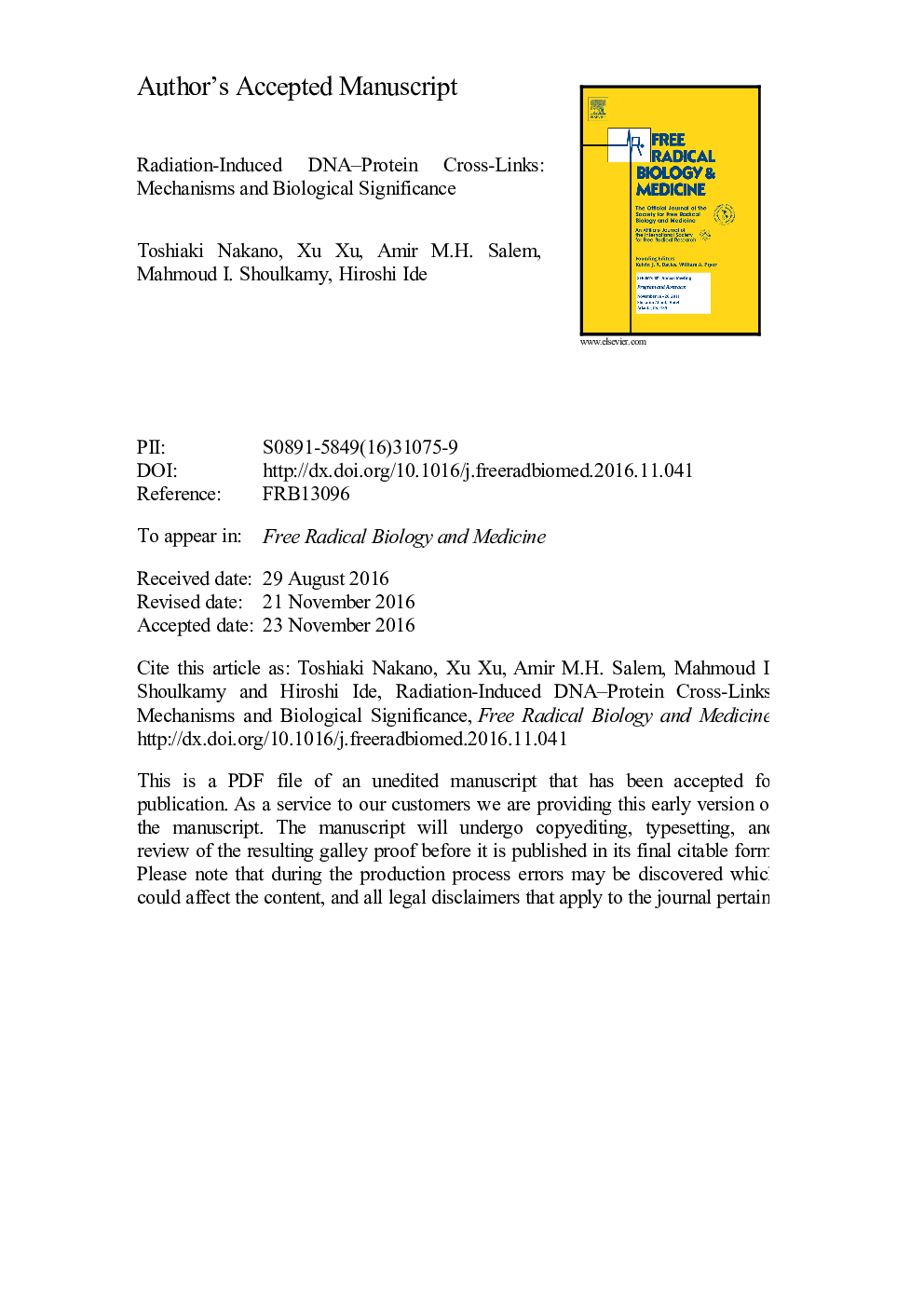| کد مقاله | کد نشریه | سال انتشار | مقاله انگلیسی | نسخه تمام متن |
|---|---|---|---|---|
| 5501813 | 1534936 | 2017 | 32 صفحه PDF | دانلود رایگان |
عنوان انگلیسی مقاله ISI
Radiation-induced DNA-protein cross-links: Mechanisms and biological significance
دانلود مقاله + سفارش ترجمه
دانلود مقاله ISI انگلیسی
رایگان برای ایرانیان
کلمات کلیدی
DSBFITCMARDnmtDPCCarbon-ionGC-MS - کروماتوگرافی گازی-طیف سنج جرمیDNA methyltransferase - DNA متیل ترانسفرازLET - اجازه دهیدLinear Energy Transfer - انتقال انرژی خطیDNA double-strand break - شکست دو رشته DNAfluorescein isothiocyanate - فلوئورسین ایسوتیوسیاناتHomologous recombination - نوترکیبی همولوگGC-MS, gas chromatography-mass spectrometry - کروماتوگرافی گازی - طیف سنجی جرمی
موضوعات مرتبط
علوم زیستی و بیوفناوری
بیوشیمی، ژنتیک و زیست شناسی مولکولی
سالمندی
پیش نمایش صفحه اول مقاله

چکیده انگلیسی
Ionizing radiation produces various DNA lesions such as base damage, DNA single-strand breaks (SSBs), DNA double-strand breaks (DSBs), and DNA-protein cross-links (DPCs). Of these, the biological significance of DPCs remains elusive. In this article, we focus on radiation-induced DPCs and review the current understanding of their induction, properties, repair, and biological consequences. When cells are irradiated, the formation of base damage, SSBs, and DSBs are promoted in the presence of oxygen. Conversely, that of DPCs is promoted in the absence of oxygen, suggesting their importance in hypoxic cells, such as those present in tumors. DNA and protein radicals generated by hydroxyl radicals (i.e., indirect effect) are responsible for DPC formation. In addition, DPCs can also be formed from guanine radical cations generated by the direct effect. Actin, histones, and other proteins have been identified as cross-linked proteins. Also, covalent linkages between DNA and protein constituents such as thymine-lysine and guanine-lysine have been identified and their structures are proposed. In irradiated cells and tissues, DPCs are repaired in a biphasic manner, consisting of fast and slow components. The half-time for the fast component is 20Â min-2Â h and that for the slow component is 2-70Â h. Notably, radiation-induced DPCs are repaired more slowly than DSBs. Homologous recombination plays a pivotal role in the repair of radiation-induced DPCs as well as DSBs. Recently, a novel mechanism of DPC repair mediated by a DPC protease was reported, wherein the resulting DNA-peptide cross-links were bypassed by translesion synthesis. The replication and transcription of DPC-bearing reporter plasmids are inhibited in cells, suggesting that DPCs are potentially lethal lesions. However, whether DPCs are mutagenic and induce gross chromosomal alterations remains to be determined.
ناشر
Database: Elsevier - ScienceDirect (ساینس دایرکت)
Journal: Free Radical Biology and Medicine - Volume 107, June 2017, Pages 136-145
Journal: Free Radical Biology and Medicine - Volume 107, June 2017, Pages 136-145
نویسندگان
Toshiaki Nakano, Xu Xu, Amir M.H. Salem, Mahmoud I. Shoulkamy, Hiroshi Ide,